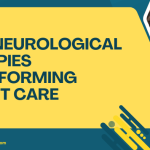1. Improved Mobility
Mobility is often compromised in individuals with neurological conditions, whether due to stroke, multiple sclerosis, or Parkinson’s disease. Physical therapy plays a crucial role in regaining movement.
How Does It Work?
Physical therapists assess your specific mobility challenges and create tailored exercises to improve range of motion, strength, and flexibility. Techniques may include:
- Stretching exercises to maintain flexibility.
- Strength training to build muscle around weakened areas.
- Functional training to practice daily activities.
“Mobility is not just about movement; it’s about independence and the ability to engage with the world.”
FAQs
Q: How long will it take to see improvements in mobility?
A: Improvement timelines vary based on individual conditions, but many patients notice changes within a few weeks.
Q: Are exercises painful?
A: Some discomfort may occur, but therapists aim to keep exercises within a manageable range. Always communicate your comfort level with your therapist.
For more information, the American Physical Therapy Association provides valuable resources on mobility exercises.
Table of Contents
2. Enhanced Balance and Coordination
Balance and coordination issues are common following neurological events. These challenges can lead to falls and injuries, making it essential to address them proactively.
Benefits of Improved Balance
The benefits of enhanced balance and coordination extend beyond safety. They also contribute to increased confidence and participation in social activities.
“Improving balance is not just about preventing falls; it’s about empowering individuals to live fully and fearlessly.”
Therapeutic Techniques
- Balance training with tools like wobble boards.
- Coordination exercises that involve tasks requiring hand-eye coordination.
- Vestibular rehabilitation for those with dizziness or balance disorders.
FAQs
Q: Can physical therapy completely eliminate balance issues?
A: While therapy can significantly improve balance, some individuals may continue to experience challenges. Ongoing practice and therapy can help maintain progress.
For more about balance training, check out the National Institute of Neurological Disorders and Stroke.
3. Pain Management
Chronic pain can be a debilitating aspect of neurological conditions. Physical therapy offers a drug-free approach to managing pain through targeted techniques.
Techniques for Pain Relief
- Manual therapy to relieve tension and improve circulation.
- Therapeutic modalities such as heat, cold, and electrical stimulation.
- Exercise therapy to strengthen muscles and alleviate strain.
“Managing pain is not just about masking symptoms; it’s about addressing the root causes to enhance quality of life.”
FAQs
Q: Is physical therapy effective for all types of pain?
A: While physical therapy is effective for many, it may not address every type of pain. A comprehensive assessment by a healthcare professional is essential.
For more insights, consider visiting the American Chronic Pain Association.
4. Increased Independence
One of the most empowering benefits of physical therapy is the potential for increased independence in daily activities. Many patients desire to return to their routines and hobbies, and physical therapy can help make this possible.
How Independence is Fostered
Therapists work on specific goals that are meaningful to you, such as:
- Walking without assistance.
- Performing daily living tasks like dressing or cooking.
- Returning to work or hobbies that bring joy.
“Independence in daily activities is a critical step toward reclaiming one’s identity and autonomy.”
FAQs
Q: How can physical therapy help with activities of daily living (ADLs)?
A: Therapists tailor exercises to simulate ADLs, gradually increasing difficulty as you improve.
For related resources, visit the National Stroke Association.
5. Holistic Approach to Recovery
Physical therapy is not just about physical improvement; it also addresses emotional and psychological well-being. Recovery from a neurological condition can be emotionally taxing, and a holistic approach can make a significant difference.
Comprehensive Care Elements
- Emotional support through counseling and encouragement.
- Education about your condition and management techniques.
- Community resources to connect you with support groups.
“A holistic approach recognizes that recovery involves the whole person—body, mind, and spirit.”
FAQs
Q: How does emotional health affect physical recovery?
A: Emotional well-being is closely linked to physical recovery. A positive mindset can enhance motivation and engagement in therapy.
For additional support, consider exploring Mental Health America.
Conclusion
Physical therapy is an invaluable resource for anyone navigating the challenges of a neurological condition. From improved mobility to increased independence, the benefits are profound and far-reaching. If you or a loved one is facing these challenges, consider consulting with a qualified physical therapist to explore how personalized treatment can aid in recovery. Embrace the journey toward restoration and well-being—you’re not alone in this process!
By incorporating physical therapy into your recovery plan, you can take significant steps toward reclaiming your life. For further reading on neurological recovery and physical therapy, check out resources from Mayo Clinic and the National Rehabilitation Center.
Also look for insights on the Top 5 Essential Insights on Neuro Care You Need to Know and Top 5 Benefits of Early Intervention in Neuro Care for a comprehensive understanding of how timely intervention can enhance recovery.





